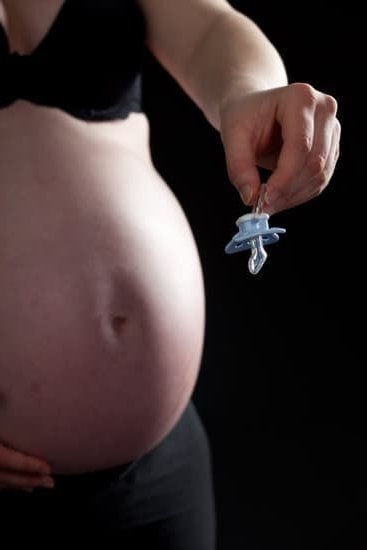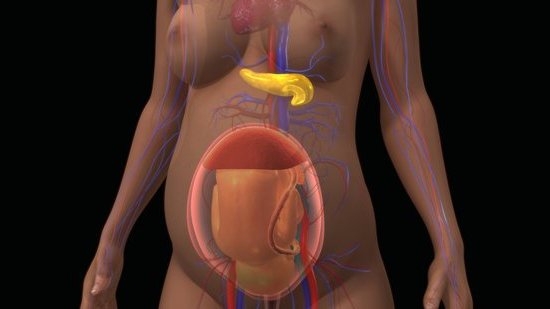During pregnancy, experiencing changes in vaginal discharge is a common occurrence that many women might wonder about. One of the questions that often arises is, “Is white discharge normal during pregnancy?” Understanding these changes can help expectant mothers navigate this aspect of their prenatal journey with confidence and reassurance.
White discharge, also known as leukorrhea, is a typical vaginal discharge experienced by expectant mothers during pregnancy. This discharge helps maintain a healthy balance of bacteria in the vagina and protects the birth canal from infection. While some changes in vaginal discharge are considered normal during pregnancy, it is essential to differentiate between what to expect and when something may indicate a potential issue.
In this article, we will delve into the various aspects of white discharge during pregnancy, including its causes, types which are normal vs. abnormal, when to seek medical advice regarding vaginal discharge, tips for managing discomfort, distinguishing white discharge from amniotic fluid leakage, debunking common misconceptions surrounding this topic, and hearing real experiences from other expectant mothers facing similar concerns. By gaining insight into these changes, pregnant individuals can feel more prepared for the natural transformations happening within their bodies.
What Causes White Discharge During Pregnancy?
During pregnancy, the body goes through a myriad of changes to support the growing fetus, and one common change that many women experience is an increase in vaginal discharge. Understanding what causes white discharge during pregnancy can help expectant mothers navigate this normal aspect of their journey.
Here are some factors that contribute to the occurrence of white discharge during pregnancy:
- Hormonal Changes: Pregnancy hormones, such as estrogen and progesterone, play a significant role in the increase of vaginal discharge. These hormonal shifts can lead to an uptick in cervical mucus production, resulting in the characteristic white or milky discharge.
- Healthy Vaginal Flora: The natural balance of good bacteria in the vagina can also impact the type and amount of discharge a woman experiences. During pregnancy, changes in pH levels and increased blood flow to the pelvic area can influence vaginal flora and lead to more white discharge.
- Mucous Plug Formation: Towards the end of pregnancy, white discharge may also be attributed to the formation of the mucous plug. This thick, jelly-like substance seals off the cervix to protect the developing fetus from infections. As a result, pregnant women may notice an increase in white or clear discharge as their bodies prepare for labor.
Understanding these underlying causes can reassure expectant mothers that experiencing white discharge during pregnancy is a normal physiological process. However, it is essential to differentiate between normal and abnormal vaginal discharge to ensure optimal maternal and fetal health throughout this transformative time.
Different Types of Vaginal Discharge
Normal White Discharge During Pregnancy
During pregnancy, it is common for women to experience an increase in vaginal discharge, which can often be white or milky in color. This type of discharge is usually nothing to worry about and can be attributed to hormonal changes in the body. The cervix also produces more mucus during pregnancy to create a protective barrier for the growing fetus against infections.
Abnormal Vaginal Discharge During Pregnancy
While white discharge is generally considered normal during pregnancy, there are some instances where it may signal an issue that requires medical attention. If the discharge is accompanied by a foul odor, itching, burning sensation, or changes in color (such as green or yellow), it could indicate an infection like bacterial vaginosis or a yeast infection. In such cases, it is important to consult a healthcare provider for proper diagnosis and treatment.
Managing Vaginal Discharge Comfortably
To manage white discharge comfortably during pregnancy, wearing cotton underwear and avoiding tight clothing can help promote airflow and reduce excess moisture in the vaginal area. Keeping the genital area clean and dry, avoiding douching, and practicing good hygiene habits are also essential for preventing infections.
It is recommended to use unscented soap for washing and avoid using scented products near the vaginal area to prevent irritation. Remember that experiencing some white discharge is normal; however, any concerns should always be discussed with your healthcare provider to ensure the health and well-being of both you and your baby.
When to Consult a Healthcare Provider About Vaginal Discharge
During pregnancy, experiencing changes in vaginal discharge is a common occurrence for many women. While some amount of white discharge is normal during pregnancy, there are instances where it may indicate an underlying issue that requires medical attention. It is important for expectant mothers to be aware of when it is necessary to consult a healthcare provider about their vaginal discharge.
Increased or Abnormal Discharge
If you notice a sudden increase in the amount of white discharge or if the consistency and color change significantly, it may be a sign of infection. Conditions such as yeast infections or bacterial vaginosis can cause changes in vaginal discharge during pregnancy. If you experience any itching, burning, or foul odor along with the increased white discharge, it is advisable to seek medical advice promptly.
Bleeding or Spotting
Any form of bleeding or spotting during pregnancy should not be ignored, especially if accompanied by white discharge. While light spotting can be common in early pregnancy, persistent bleeding along with abnormal discharge may indicate a more serious issue such as placenta previa or preterm labor. Contact your healthcare provider immediately if you experience any bleeding along with changes in your vaginal discharge.
Unusual Symptoms
In some cases, abnormal white discharge during pregnancy might also be accompanied by other unusual symptoms such as pelvic pain, fever, or discomfort while urinating. These could be signs of a urinary tract infection (UTI) or other complications that require medical attention.
It is crucial to communicate openly with your healthcare provider about all the symptoms you are experiencing to ensure the best possible care for you and your baby. Remember that monitoring your body’s changes and seeking prompt medical advice when needed is essential for a healthy pregnancy journey.
Tips for Managing White Discharge Comfortably During Pregnancy
During pregnancy, experiencing changes in vaginal discharge is common, and many expectant mothers may wonder if white discharge is normal during this time. The answer is yes, white discharge is indeed a normal occurrence during pregnancy. It typically occurs due to increased levels of estrogen and blood flow to the pelvic area, leading to an increase in vaginal secretions. While it may be concerning for some women, understanding how to manage it comfortably can help alleviate any discomfort or anxiety.
Here are some tips for managing white discharge comfortably during pregnancy:
- Wear breathable cotton underwear: Opting for breathable fabrics such as cotton can help prevent moisture build-up and promote air circulation, reducing the risk of irritation.
- Practice good hygiene: Keeping the vaginal area clean and dry can help prevent any potential infections. Avoid using scented products or douching, as these can disrupt the natural pH balance of the vagina.
- Stay hydrated: Drinking plenty of water can help thin out vaginal discharge, making it less noticeable and more comfortable to deal with.
It is important to remember that while white discharge is normal during pregnancy, any changes in color, consistency, or odor should not be ignored. If you notice unusual symptoms such as a fishy odor, greenish or yellowish tint, or accompanied by itching or burning sensations, it is best to consult your healthcare provider for further evaluation.
By staying informed and taking proactive steps to manage white discharge comfortably, expectant mothers can navigate this aspect of pregnancy with confidence and peace of mind.
How to Differentiate White Discharge From Amniotic Fluid Leakage
During pregnancy, it is common for expectant mothers to experience changes in their vaginal discharge. One important concern that often arises is how to differentiate between normal white discharge and amniotic fluid leakage. White discharge during pregnancy is usually considered normal as it is the body’s way of maintaining a healthy environment in the vagina. This discharge, known as leukorrhea, often increases in volume during pregnancy due to hormonal changes.
Amniotic fluid leakage, on the other hand, may indicate a rupture of the amniotic sac and requires immediate medical attention. It is important to be able to distinguish between the two to ensure the health and safety of both the mother and the baby.
One key difference is that amniotic fluid is usually clear and odorless, unlike white discharge which may have a milky or slightly yellowish color and may have a subtle odor. Additionally, amniotic fluid tends to leak continuously or in gushes, while white discharge is more consistent throughout the day.
If you suspect that your vaginal discharge may actually be amniotic fluid leakage, it is essential to contact your healthcare provider immediately. They can perform tests such as an amniocentesis or nitrazine paper test to determine if your membranes have ruptured.
Prompt identification of this issue can help prevent complications such as infections or premature labor. Remember that while white discharge is normal during pregnancy, any sudden changes or unusual odors should still be discussed with your healthcare provider for proper evaluation and guidance on how to proceed.
Common Misconceptions About White Discharge in Pregnancy
During pregnancy, many women experience an increase in vaginal discharge. While some changes in discharge are normal and expected during this time, there are also numerous misconceptions surrounding white discharge in pregnancy. One common misconception is that any increase in vaginal discharge is a sign of infection or a problem with the pregnancy. However, it is important to note that white discharge is typically a normal occurrence during pregnancy due to hormonal changes.
It is essential for expectant mothers to understand that the consistency, color, and amount of vaginal discharge can vary throughout pregnancy. White discharge that is milky or clear in color and has a mild odor is usually considered normal. This type of discharge helps protect the birth canal from infection and bacteria. Additionally, white discharge may increase as pregnancy progresses due to hormonal fluctuations and increased blood flow to the pelvic area.
Another misconception about white discharge during pregnancy is that it always indicates a yeast infection. While it is true that pregnant women are more susceptible to yeast infections due to hormonal changes, not all instances of white discharge are indicative of an infection. It is crucial for pregnant individuals to differentiate between normal pregnancy-related discharge and abnormal discharge that may be a sign of infection or other issues.
| Fact | Detail |
|---|---|
| Color of Normal Discharge | Milky or clear |
| Odor | Mild odor |
| Cause | Hormonal changes and increased blood flow |
Real Experiences
Many expectant mothers have reported experiencing an increase in white discharge as their pregnancy progresses. This is often attributed to hormonal changes in the body that stimulate the production of cervical mucus. The consistency and amount of white discharge can also fluctuate throughout different stages of pregnancy, sometimes increasing in quantity as you approach your due date. While this can be frustrating or uncomfortable for some women, it is typically nothing to worry about.
In most cases, white discharge during pregnancy is clear or milky in appearance and has a mild odor or no odor at all. However, if you notice any changes in color (such as pink or green), texture (like cottage cheese), or smell (fishy or foul), it could indicate an infection that would require medical attention.
It’s always best to consult your healthcare provider if you have any concerns about the color, consistency, or amount of white discharge you are experiencing during pregnancy.
| White Discharge During Pregnancy | Common Characteristics |
|---|---|
| Color | Clear or milky |
| Texture | Normal vaginal mucus consistency |
| Odor | Mild odor or no odor at all |
Conclusion
In conclusion, it is important for expectant mothers to remember that white discharge during pregnancy is a normal and common occurrence. Understanding the changes in vaginal discharge throughout pregnancy can help alleviate any concerns or anxieties. While it may be bothersome at times, knowing what causes white discharge and how to differentiate between normal and abnormal types can help manage it more comfortably.
Consulting a healthcare provider when necessary is crucial, especially if the white discharge comes with symptoms like itching, burning, or a foul odor. It’s always better to err on the side of caution and seek professional advice. Remember that each pregnancy is unique, so what may be normal for one woman could be cause for concern for another.
Ultimately, embracing the natural changes in your body during pregnancy includes accepting the fluctuations in vaginal discharge. Seek support from other expectant mothers or healthcare providers if you have any questions or worries about this topic. Remember that self-care and awareness play a key role in navigating the journey of pregnancy, welcoming these changes as part of the beautiful process of bringing new life into the world.
Frequently Asked Questions
What Is the Reason for White Discharge During Pregnancy?
White discharge during pregnancy is a common occurrence and is usually due to increased estrogen levels and blood flow to the vaginal area. This discharge, known as leukorrhea, helps to prevent infections and maintain a healthy pH balance in the vagina. It is typically odorless or may have a mild smell.
How Do Pregnancy Discharge Look Like?
Pregnancy discharge can vary in color and consistency, but white discharge is one of the most common types experienced by pregnant women. It can appear thick, milky, or even watery at times. The amount of discharge may also vary throughout pregnancy, with some women experiencing more than others.
What Is the Cause of White Discharge?
The cause of white discharge, particularly during pregnancy, can be attributed to hormonal changes that occur in the body. These changes lead to an increase in cervical mucus production, which manifests as white discharge.
Infections such as yeast infections or bacterial vaginosis can also cause abnormal white discharge, so it’s essential for pregnant women to consult their healthcare provider if they notice any changes in their vaginal discharge.

Welcome to my fertility blog. This is a space where I will be sharing my experiences as I navigate through the world of fertility treatments, as well as provide information and resources about fertility and pregnancy.





